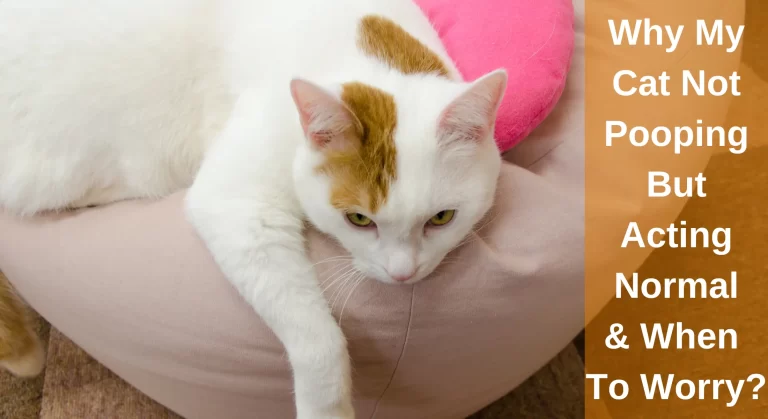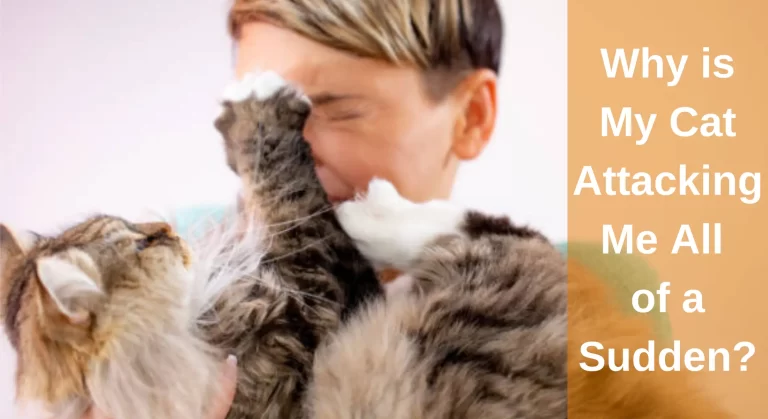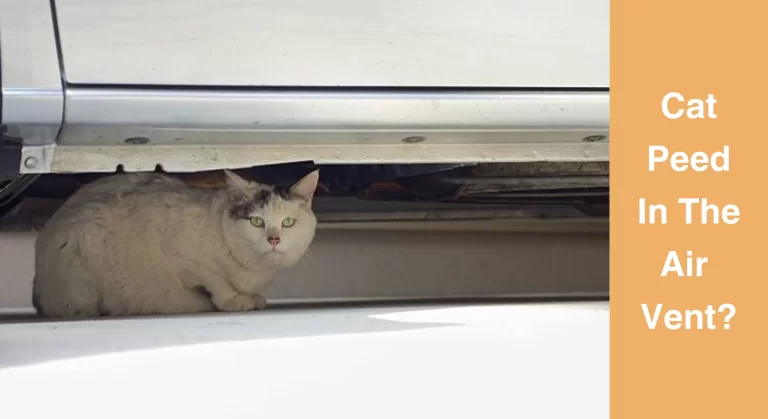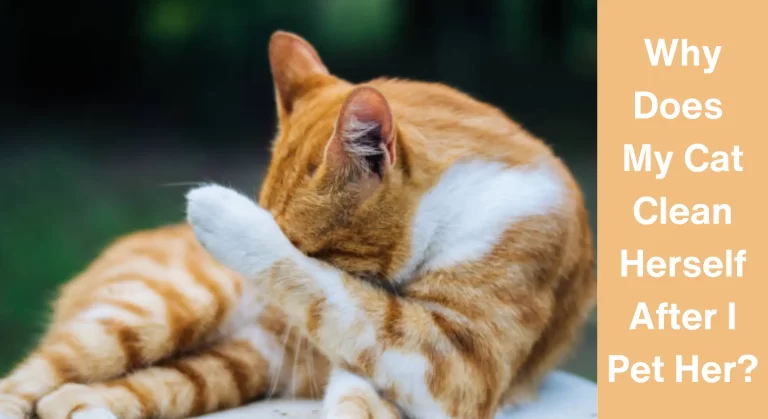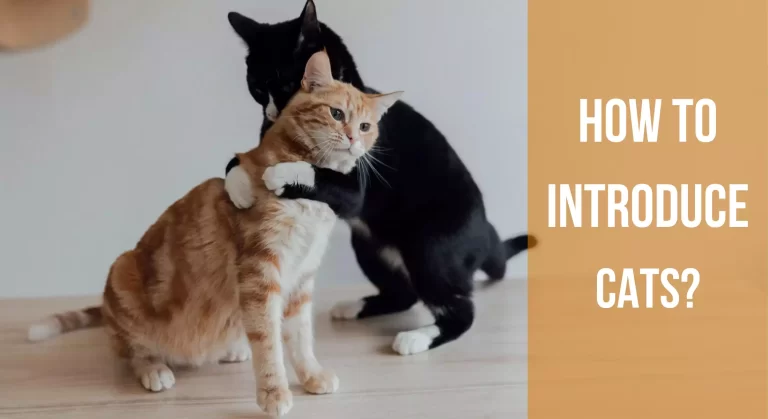Why Is My Cat Drooling When Purring? [Explained]
Cats are clever creatures, and the bulk of their actions serve a variety of functions. These include drooling and purring, for instance. Occasionally, cat drooling may be an indication of a health issue, such as an oral infection. Purring is a happy sound its common for cats to purr when they are in a relaxed environment.
As a cat owner, you might have observed your feline friend drooling while purring, and it may have left you wondering “Why is my cat drooling when purring?” is it normal behaviour or a cause for concern?
Well, the good news is that drooling while purring is usually not a sign of any serious health issue. Cats may drool while purring for various reasons, including happiness, over-stimulation, kneading, head nudging, or displaying other contented behaviours that are usually normal for cats. It is often a sign of happiness, relaxation, and comfort.
In this article, we will explore some of the common reasons why cats drool while purring, and what you can do to ensure your kitty stays healthy and happy.
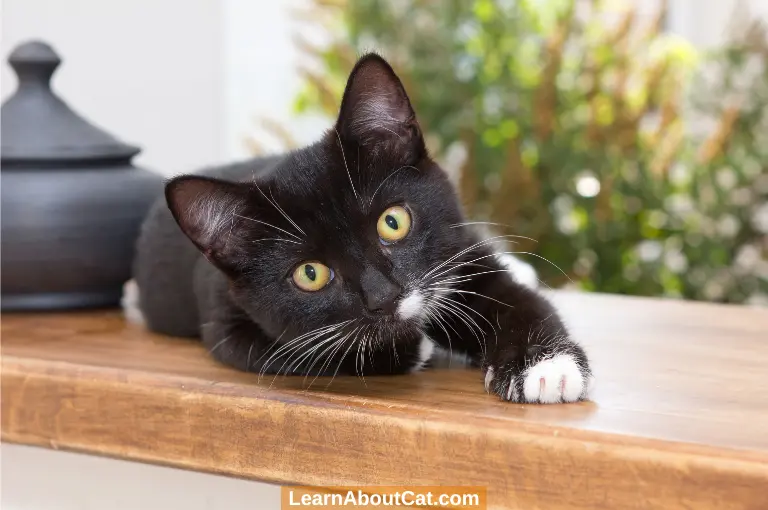
What is purring?
Purring is a unique sound that cats make when they are relaxed and content. It is often described as a low, rumbling sound that comes from deep within the cat’s chest.
A cat’s purr is a way of communicating emotions, such as happiness, contentment, and relaxation
Why do cats purr?
There are many reasons that contribute to cats purring, but affection and contentment are among the most common. Cats also purr when they are in pain or distress as a way of self-soothing.
Purring has also been shown to have healing properties that’s why cats purr when they are in pain because the vibrations help the body recover and can help to reduce stress and anxiety in cats. The only method to ascertain the true reason for your cat’s purring, therefore, is to carefully observe their body language.
What is drooling?
Drooling is when excess saliva flows out of a cat’s mouth. It can be a normal occurrence, especially when a cat is excited about food or treats. A cat is generally OK if it is drooling but otherwise acting normally. Slobbering is a common sign of a cat’s extreme satisfaction and pleasure. Drooling excessively, on the other hand, is a sign of a more serious health problem.
Why Do Cats Drool and Purr at the Same Time?
If a Cat drools and purrs same time it’s likely that the cat is very happy and relaxed. It can be a way for cats to show their contentment and satisfaction. Some cats may also drool while purring as a result of a reflex action triggered by the vibration of their vocal cords.
Reasons Why Is My Cat Drooling When Purring
Purring is a unique behaviour that is exclusive to cats. It is a low-pitched, rumbling sound that cats make when they are happy or content. Purring is often associated with other behaviours such as kneading, rubbing, and grooming. Many cats also drool when they purr, and this is because purring is a relaxing behaviour that can stimulate the salivary glands.
Now, let’s explore why cats drool while purring. There are several reasons why this may happen, including:

1. She is Content and At Peace
Your cat is most likely extremely pleased and relaxed if she is simultaneously drooling and purring. Typically, a cat will drool and dribble while it is having fun.
- Pleasure causes the brain’s happy hormone called serotonin, to be produced. This is widely known to make people salivate more. Now that it has more saliva in its mouth, your cat would drool.
- Their jaw muscles relax just as much as their bodies do. This suggests that they could keep their lips slightly ajar, letting some saliva escape. Some people leak when they fall asleep with their mouths open in a manner similar to this.
Cats typically purr when they’re having fun, so when you pet them, you can hear it. Mother cats purr to signal to their young where to find food and shelter, and the kittens purr back.
When you put these two observations together, it’s obvious that your cat is virtually always happy, at ease, and upbeat when purring and drooling happen simultaneously. The most probable time for this to become clear is when you pet your cat. When I pet my cat, he always drools, and I can tell from his body language that I’m doing it right because of this.
But it might happen at any time! For instance, a cat will purr as it sleeps if it is content and comfortable. Your cat will also be completely at peace if she is fast asleep. Their jaw and mouth muscles are impacted, which raises the possibility of drooling.
Make sure your cat is drooling and purring for the appropriate reasons by keeping a lookout for these additional signs of satisfaction.
2. Kneading
When your cat Kneed, its front paws will move sequentially and rhythmically. Furthermore, it shows that they are content and happy and it can stimulate the release of endorphins in their brains, which may cause drooling.
Your cat may start to bump its head on your hand or body if they are drooling and purring while you are caressing them.
3. Head Nudging
An affectionate gesture performed by cats towards their owners is head nudging. They may rub their heads against your hand or face, and this can also stimulate drooling as a sign of contentment.
4. Body Language
When a cat is in a relaxed and comfortable state, it may exhibit certain body language, such as lying down with its paws tucked under its body or stretching out in a sunbeam. This relaxed state can also cause drooling as a sign of contentment.
Your cat’s posture tells you a lot about how she is feeling. She is probably at ease if she is standing or moving without difficulty if their tail is slightly curled, or if she is doing both. However, a thudding tail and a rigid attitude are warning signals of problems.
5. Facial Expressions
Cats can communicate a lot through facial expressions, and some expressions can trigger drooling. For example, when a cat is particularly relaxed or content, it may have a slightly open mouth, which can lead to drooling. A combination of this behaviour with purring and kneading will ensure your cat’s contentment.
When cats feel relaxed, they will make little facial expressions, gently blink their eyes, and tilt their heads away from the observer. They will also have ears that are neutrally positioned, neither pressed flat against their skull nor kept rigidly erect.
6. Overstimulation
Cats may also drool and purr when they are overstimulated. This behaviour may occur during playtime or when they are receiving attention from multiple people.
If your cat appears to be overstimulated, it’s essential to give them a break and allow them to calm down.
7. Making Biscuits
Your cat will stoop and rhythmically raise and lower its front paws. It’s often referred to as making biscuits when describing it. They adopted the practice of caressing their mother’s breasts to encourage milk production, much like kittens and cats. Additionally, it demonstrates their happiness and contentment.
Your cat may begin to slam its head on your hand or body if they are drooling and purring while you are touching them.
8. She has Tension and Anxiety
The antithesis of joy and pleasure, tension, is another cause of your cat’s drooling and purring. Cats might get nervous about the tiniest things and don’t adjust well to change: Such as moving to a new home.
She may drool and purr when you allow a new visitor or animal into your house, loud party music or fireworks noises, or operating a car. Cats frequently drool when they are stressed or upset. Stressors activate the reflexes and circuits in their brains, increasing salivation.
What Should I Do If My Cat Drools And Purrs Same Time?
If your cat drools and purrs at the same time, it is usually a sign of contentment and relaxation. There is nothing to worry about in this behaviour because it is common in many cats.
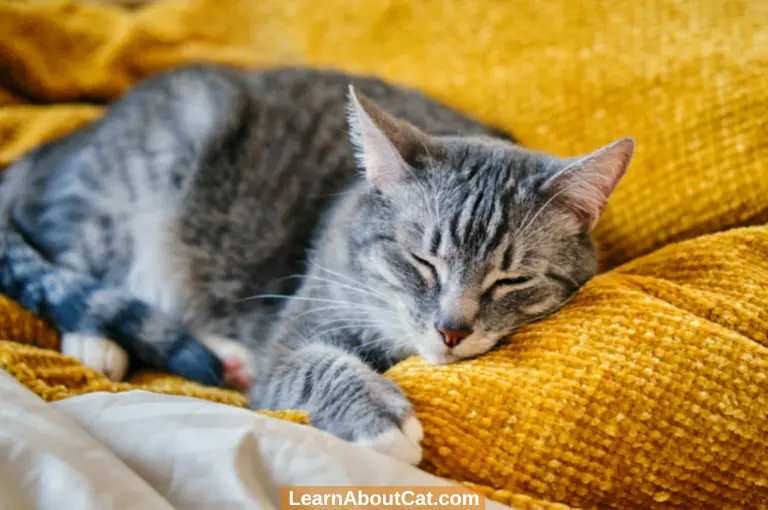
You should be able to tell whether your cat is happy or content, anxious, or in pain using the information in the aforementioned categories. Consider the other behavioural signals, body language clues, and clinical sickness signs to decide which one applies.
However, if you notice any sudden changes in your cat’s drooling or purring behaviour, or if the drooling is excessive, it may be a sign of a medical issue. You should take your cat to the veterinarian for an exam to rule out any underlying health problems.
How to Tell if Your Cat’s Drooling is Normal or Not?
If you notice that your cat is drooling while purring, it’s important to determine if the drooling is excessive or not. When drooling is excessive, it can indicate a medical problem, but normal drooling is usually nothing to worry about. If your cat’s drooling is excessive and accompanied by other symptoms such as difficulty eating or drinking, it’s important to take them to the vet for an evaluation.
Here are some concerning reasons for cat drooling:
- Dental Problems: Cats with dental problems such as gum disease or broken teeth may drool excessively.
- Poisoning: Ingestion of poisonous substances such as plants, cleaning products, or human medication can cause drooling in cats.
- Oral Infections: A cat that suffers from an oral infection, such as stomatitis or gingivitis, may drool excessively.
- Nausea: Cats may drool excessively when they are nauseous, particularly if they have ingested something that doesn’t agree with them.
- Respiratory Problems: Respiratory problems such as upper respiratory infections or asthma can cause cats to drool excessively.
- Foreign Objects: If a foreign object such as a piece of string or a bone becomes lodged in a cat’s throat, it can cause excessive drooling.
Also Check Out: Why Your Cat is Making Weird Mouth Movements?
When to Take Your Cat to the Vet
While drooling when purring can be a normal behaviour for some cats, it’s essential to take your feline friend to the vet if you’re concerned. Here are some signs that your cat may need medical attention:
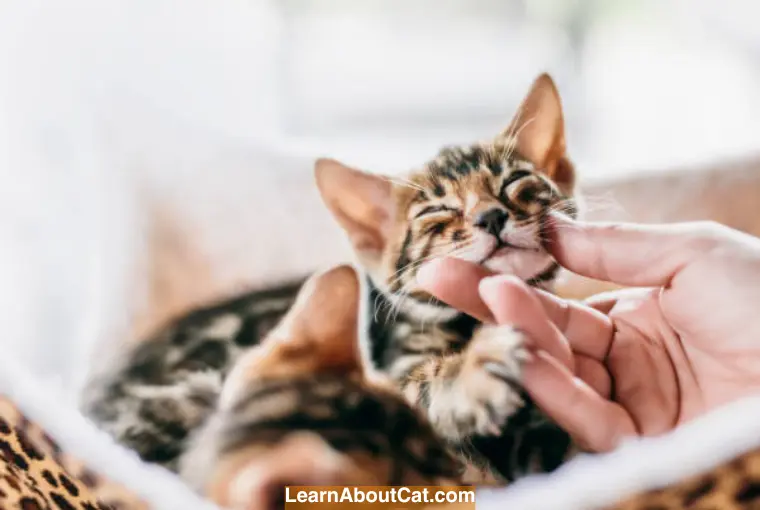
- Excessive drooling that is not related to purring
- Drooling that is accompanied by other symptoms, such as vomiting or diarrhoea
- Drooling excessively due to dental problems or mouth ulcers
- Drooling in response to nausea or stress
- Poisoning or exposure to toxins
- Foreign objects stuck in the mouth or throat
- Changes in your cat’s eating habits or weight
- A decrease in your cat’s energy level or activity
- A change in your cat’s behaviour, such as hiding or aggression
As soon as you notice any of these symptoms, take your cat to the veterinarian.
How Do I Get My Cat To Stop Drooling And Purring? Home Remedies for Excessive Drooling in Cats
Drooling excessively is a sign that your cat may have an underlying medical condition, so you should take him to a veterinarian for checks. However, if your cat’s drooling is occasional and not a cause for concern, there are a few things you can do to minimize it.
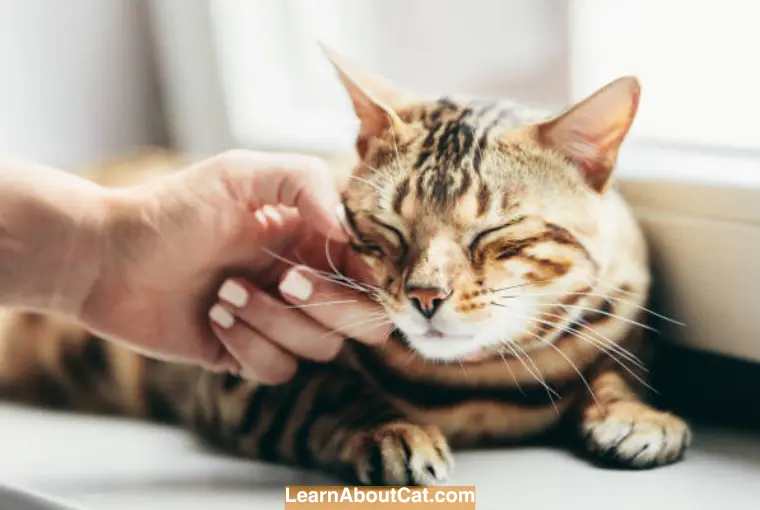
- Regular dental checkups: Keeping cats’ teeth clean and checking them regularly can help prevent dental problems, which can cause excessive drooling.
- Keep your cat hydrated: Ensure that your cat has access to clean, fresh water at all times. Cats suffering from dehydration may drool excessively.
- Reduce over-stimulation: If your cat is drooling due to over-stimulation, try reducing their playtime or petting sessions. Give them some alone time to relax and calm down.
- Keep your cat calm and relaxed: Excitement can cause cats to drool when they’re purring. Keeping your cat calm and relaxed can help minimize their drooling.
- Monitor their diet: If your cat has dental problems or mouth infections, certain foods may aggravate their condition and cause them to drool. Feeding your cat a healthy, balanced diet that meets its nutritional needs. Avoiding feeding your cat table scraps or other human food. Speak to your vet about the best diet for your cat’s specific needs.
- Play with your cat: Playing with your cat and providing them with toys to chew on can help keep their teeth healthy and prevent dental problems that may cause excessive drooling.
- Reduce stress: If your cat is drooling in response to stress or anxiety, it’s important to identify and address the underlying cause. This may involve providing your cat with a quiet space to retreat to or addressing any issues that may be causing them to feel stressed.
It’s important to note that occasional drooling when purring is usually not a cause for concern. However, if your cat’s drooling is excessive or accompanied by other symptoms, it’s essential to take them to the vet to rule out any underlying medical issues.
Frequently Asked Questions
Is cat drooling while purring normal?
Yes, drooling while purring is a normal behaviour in cats. It is not uncommon for cats to drool when they are feeling happy, relaxed, or content. However, if the drooling is excessive or accompanied by other symptoms, it may be a cause for concern.
What are some normal reasons for cat drooling?
Cats drool for various reasons, and in most cases, it’s entirely normal. Some of the most common reasons cats drool are as follows:
1. Contentment: Cats may drool when they are happy and relaxed, such as when they are being petted or cuddled.
2. Hunger: Cats may drool when they are anticipating food, particularly if they enjoy the flavour of their meal.
3. Grooming: Cats may drool when they are grooming themselves, particularly when they are cleaning their faces.
4. Heat: Cats may drool when they are overheated, particularly in warm weather or in a hot environment.
Why is my cat dripping drool?
Your cat may be dripping drool due to excitement, pleasure, or contentment. However, excessive drooling can be a sign of dental problems, gastrointestinal issues, or neurological disorders, so it’s important to monitor their behaviour and seek veterinary care if necessary.
Is it normal for cats to drool when they are scared?
No, drooling is not a normal response to fear or anxiety in cats. If your cat is drooling excessively in response to stressful situations, it may be a sign of an underlying health issue.
Should I be concerned if my cat drools while sleeping?
No, drooling while sleeping is not a cause for concern as it is a normal behaviour in some cats.
Can dental problems cause my cat to drool and purr at the same time?
Yes, dental problems are one of the most common reasons why cats drool when they’re purring. Cats’ teeth can become infected or damaged, leading to pain and inflammation.
Dental problems such as gingivitis or a broken tooth can cause your cat to drool excessively while purring.
Why do some cats drool more than others?
Some cats may drool more than others due to genetic factors or individual differences in their anatomy or behaviour. Drooling may also be a more common problem in certain breeds of cats compared to others.
However, it is always advisable to see a veterinarian if your cat experience excessive drooling to rule out any underlying health problems
Wrap Up!
When you see your cat drooling while purring, it often implies that your feline companion is content and happy. They could do this while being petted or when nodding asleep. However, if the drooling is excessive or accompanied by other symptoms, it may be a sign of a more serious medical issue.
To differentiate between the two, you’ll need to watch for indications in their body language and actions. If you are confident your cat is sick or anxious after viewing them, it is your job to help them. Create a calm and loving environment for them in your home and take them to the vet so that any ailments may be treated.
Related Posts:
Who is Isabella?
My name is Isabella, and I am a dedicated and knowledgeable cat enthusiast. With years of experience caring for cats and a deep love for felines, I made a mission to help other cat lovers navigate the challenges of cat ownership.


